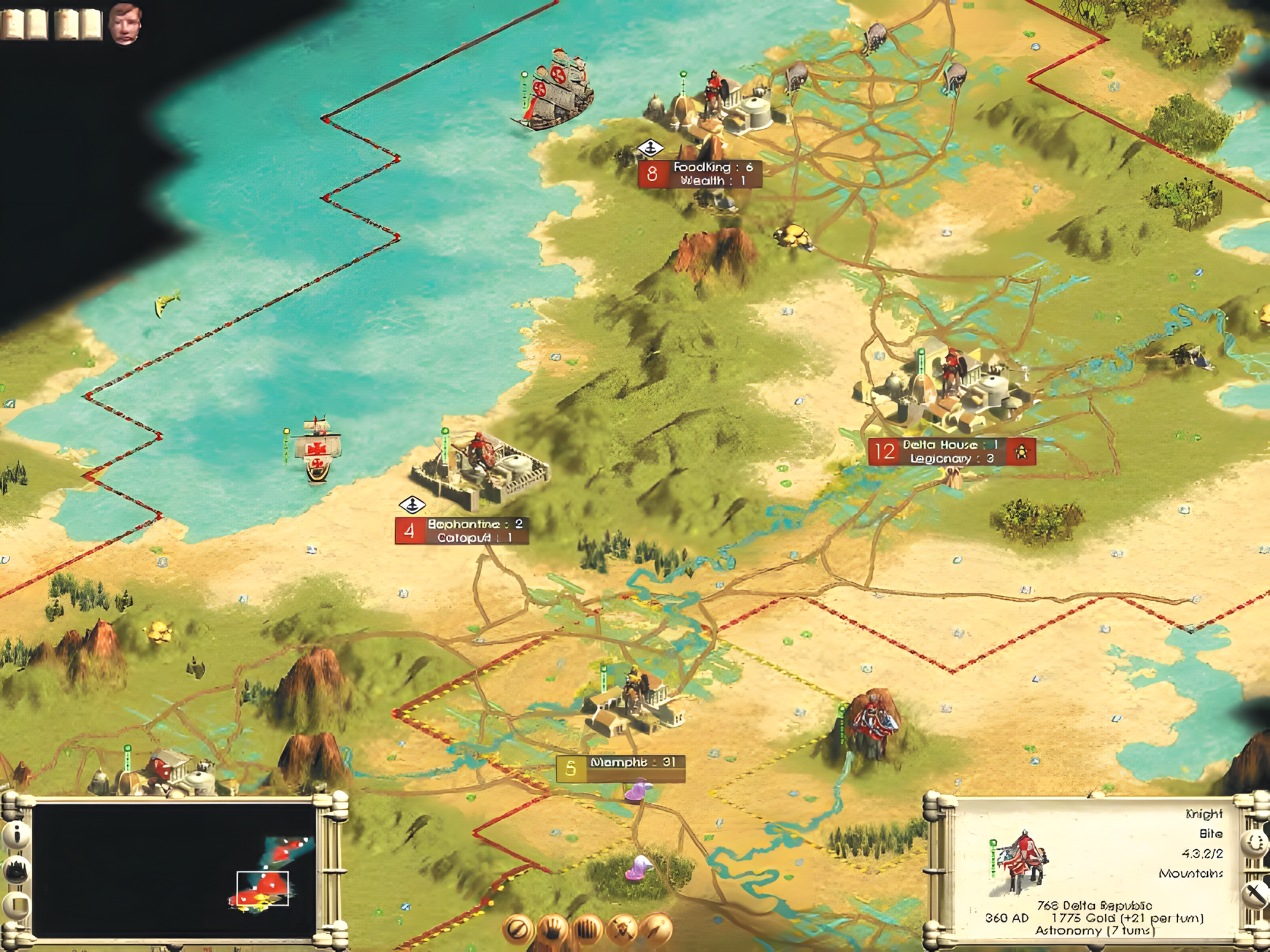By Eric T. Baker
The premise is simple. The player chooses one of 16 civilizations and tries to lead it from the dawn of time to the space age. Players can set what sort of world they want to play on and how many computer-controlled civilizations they want to compete against. Not simply a war game, players control their civilizations’ cultural and industrial development as well their militaries. The game is turn-based and completely addictive. At 10:00 pm a player will find himself thinking “OK, one more turn and then I’ll have X, and I can shut it down. Huh. That’s interesting. OK. One more turn.” The next time the player looks at the clock, it will be midnight.
Sometimes seeing “III” on a box label is a sign to stay away, but in this case it simply means that the game has learned its lessons and built upon the strengths of the two games that came before it. For instance, CivIII automatically saves the player’s last five turns, so that even if the game crashes (a rarity, particularly once the patch is installed), very little is lost. There are fewer civilizations to choose from than in CivII, but the ones that were kept are better balanced and have much better artwork.
There are six different ways to win CivIII, from the direct method of wiping out of the other civs, to the very difficult method being the first to launch a spaceship. The most intriguing is the culture win. By building wonders, universities, museums, and performance halls, a civilization can expand its borders without ever firing a shot in anger. Culture can be so overwhelming that cities will actually revolt from their founding civilizations and join the one whose culture has extended over them.
The interface is very simple considering the large number of factors and units the player controls, and most elements of the game can be automated if the player wants to focus on certain things and delegate the rest. Players negotiate constantly with the other civilizations, making trades and alliances. In fact, because of the way resources are distributed, the later stages of the game are very hard to win unless players bargain and trade with their rivals.

It is a rare game that so pulls players in that they will find themselves playing far longer than they intended, and then dreaming about the game even when they aren’t playing. Civilization III is such a game. Don’t buy it until you will have lots time to play it.
Panzer Elite Special Edition by Wings from JoWooD Productions is a World War II tank warfare simulation. Scenarios place the action at the scenes of the greatest battles during the war: North Africa, Sicily, Italy, and Normandy. Players take the role of a tank troop commander in either the U.S. or German forces and make all the strategic and tactical decisions that come with fighting tanks.
The game has both stand-alone scenarios and comprehensive campaigns. Between the two, there are 80 scenarios based on real battles from 1942 to 1944 in Europe and North Africa. These battles are fought with 23 different tank types, including the German Tiger and the American Sherman, on detailed 3-D landscapes with trees, buildings, and rivers. In single-player battles, the computer controls not only the tanks, but also infantry, artillery, and antitank guns. The game can also be played over the internet or a LAN.
For the special edition, Wings has added new campaigns in Russia and Britain, plus winter and night battles. There are over a hundred additional tanks and vehicles, objects, and a scenario editor so that players can personalize their battles and machines.









Join The Conversation
Comments
View All Comments